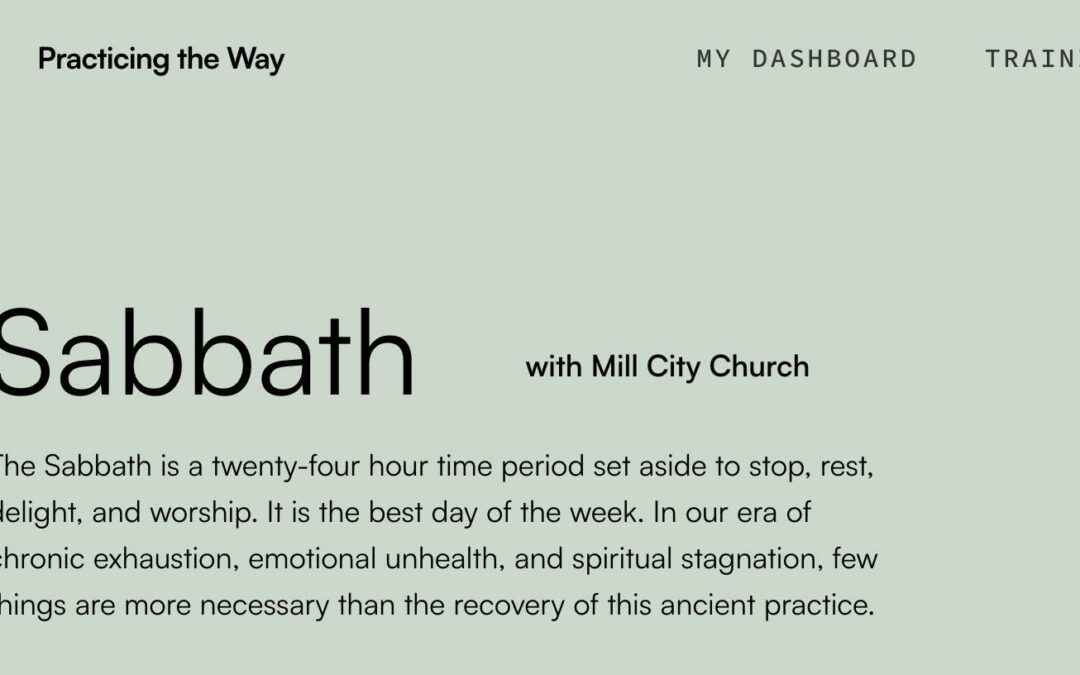As we are talking about resting with God as a community, some may wonder about the practice of adding a more formal time of sabbath to their week. Here is a short explanation, but you can take part in four weeks of resources by John Mark Comer and the team from Practicing The Way: Click here!
Here is a short description that you can jump off of right away:
When practiced traditionally by Jewish communities and some Christians, Sabbath is a 24 Hour time period in which we stop all work and set aside a day to rest, delight and worship.
The most literal meaning of the Hebrew verb shabbat – “to stop.” To sabbath is, at it’s most basic, to stop, to cease, to be done.
But that same Hebrew word can also mean: To rest, to delight and to worship.
John Mark Comer and the team from Practicing The Way outline their resources in these movements:
- Stop
- Rest
- Delight
- Worship
If you read the wider Sabbath literature, some of which is as old as the New Testament itself, you discover there are 12 common activities that fill up a traditional Sabbath.
1. Lighting the candles
2. Blessing the children
3. Eating a Sabbath meal
4. Expressing gratitude
5. Singing
6. Worshiping with your church
7. Walking
8. Napping
9. Making love to your spouse
10. Reading, especially Scripture
11. Spending time alone with God
12. Spending time with family and friends in conversation and celebration
This is not a “to-do list,” but more like 12 best practices that you are invited to grow into over time as your heart desires. Your first week – try picking 1-3 of these practices!
If you are new to practicing Sabbath – The team from Practicing The Way encourage these first steps:
1. Start small Start where you are, not where you “should” be. If a full 24 hours is too much, start with a half day; if that’s too much, start with a few hours.
2. Think subtraction, not addition Please do not “add” Sabbath into your already over busy, overfull life. Think: what can I cut out? A weekend sports team? A house project? Weekend emails? Formation is about less, not more.
3. You get out what you put in The more fully you give yourself to this Practice, the more life-changing it will be. The more your just dabble with it, the more shortcuts you take, the less of an effect it will have on your transformation.
4. Remember the J-curve Experts on learning tell us that whenever we set out to master a new skill, it tends to follow a J-shaped curve; we tend to get worse before we get better. If you currently enjoy your Sunday routine or day off, don’t be surprised if your first few Sabbaths are awkward and difficult. Just stay with the practice; you will come around.
5 There is no formation without repetition Spiritual formation is slow, deep, cumulative work that takes years, not weeks. The goal of this four-week experience is just to get you started on a journey of a lifetime. Upon completion of this Practice, you will have a map for the journey ahead and hopefully some possible companions for the Way. But what you do next is up to you.
Again, you can take part in four weeks of resources by John Mark Comer and the team from Practicing The Way: Click here!



Recent Comments